Lincoln Navigator: Automatic Transmission - 10-Speed Automatic Transmission – 10R80 / Selector Shaft Seal. Removal and Installation
Lincoln Navigator 2018-2025 Workshop Manual / Automatic Transmission / Automatic Transmission - 10-Speed Automatic Transmission – 10R80 / Selector Shaft Seal. Removal and Installation
Special Tool(s) / General Equipment
 |
307-549 Installer, Shift Shaft Fluid Seal TKIT-2005D1-F1 |
Removal
-
With the vehicle in NEUTRAL, position it on a hoist.
Refer to: Jacking and Lifting (100-02 Jacking and Lifting, Description and Operation).
-
If equipped, remove the retainers and splash shield.
 |
-
Remove and discard the park override lever bolt (7P219).
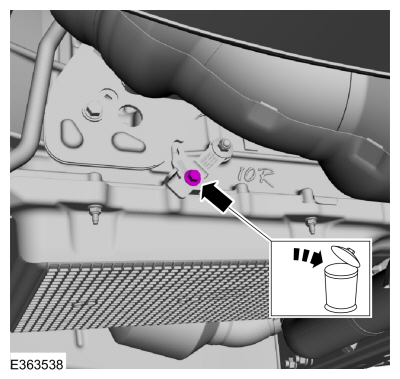 |
-
Remove the nut and the park manual release lever.
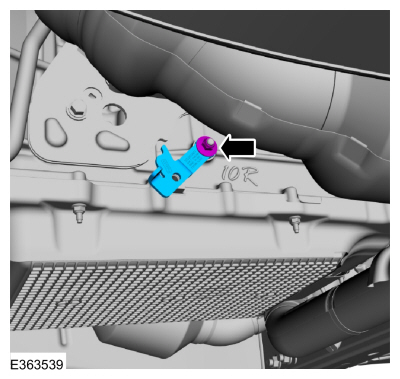 |
-
Remove and discard the selector shaft seal (7F337).
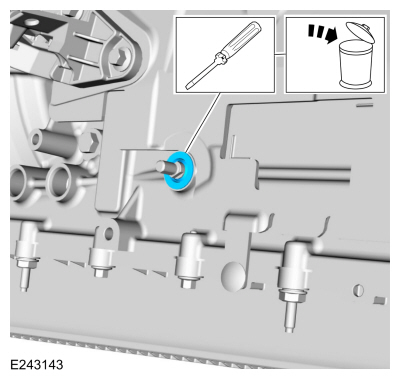 |
Installation
-
Slide the selector shaft seal onto the manual shaft.
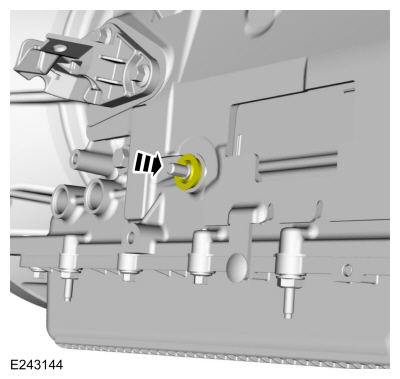 |
-
Using the special tool, install the selector shaft seal.
Use Special Service Tool: 307-549 Installer, Shift Shaft Fluid Seal.
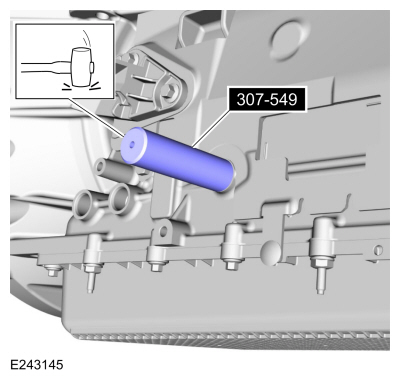 |
-
Install the park manual release lever and nut.
Torque: 177 lb.in (20 Nm)
 |
-
Install a new park override lever bolt.
Torque: 177 lb.in (20 Nm)
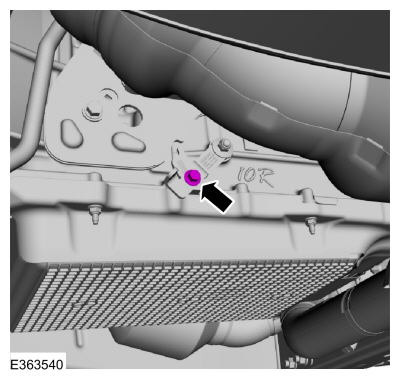 |
-
If equipped, install the splash shield and the retainers.
Torque: 71 lb.in (8 Nm)
 |
 Park Lock Pawl Solenoid. Removal and Installation
Park Lock Pawl Solenoid. Removal and Installation
Removal
Remove the transmission fluid pan, gasket and filter.
Refer to: Transmission Fluid Pan, Gasket and Filter (307-01 Automatic
Transmission - 10-Speed Automatic Transmission – 10R80, Removal and
Installation)...
 Shift Solenoids (SS). Removal and Installation
Shift Solenoids (SS). Removal and Installation
Materials
Name
Specification
Motorcraft® MERCON® ULV Automatic Transmission FluidXT-12-QULV
WSS-M2C949-A, MERCON® ULV
Removal
NOTE:
If a new SS is installed, carry out the adaptive learning drive cycle procedure at the end of the repair...
Other information:
Lincoln Navigator 2018-2025 Workshop Manual: Front Parking Aid Camera. Removal and Installation
Removal Remove the front bumper cover. Refer to: Front Bumper Cover (501-19 Bumpers, Removal and Installation). Remove the screws and the bracket. Remove the front parking aid camera and washer nozzle as an assembly...
Lincoln Navigator 2018-2025 Workshop Manual: Active Grille Shutter. Diagnosis and Testing
Diagnostic Trouble Code (DTC) Chart Diagnostics in this manual assume a certain skill level and knowledge of Ford-specific diagnostic practices. REFER to: Diagnostic Methods (100-00 General Information, Description and Operation). Module DTC Description Action PCM P059F:00 Active Grille Air Shutter 'A' Performance/Stuck Off: No Sub Type Information GO to Pinpoint T..
Categories
- Manuals Home
- 4th Gen Lincoln Navigator Service Manual (2018 - 2025)
- Body and Paint
- Front Bumper Cover. Removal and Installation
- SYNC Module [APIM]. Removal and Installation
- Transmission Fluid Level Check. General Procedures
- Vehicle Dynamics Control Module (VDM). Removal and Installation
Differential Case Runout Check. General Procedures
Special Tool(s) / General Equipment
 205-1016
205-1016Installer, Differential Bearing
TKIT-2014D-ROW2
TKIT-2014D-FL_ROW
 205-153
(T80T-4000-W)
205-153
(T80T-4000-W)
Handle
 205-D061
(D83T-4205-C2)
205-D061
(D83T-4205-C2)
Step Plate Dial Indicator Three Leg Puller Punch
Copyright © 2025 www.linavigator4.com
